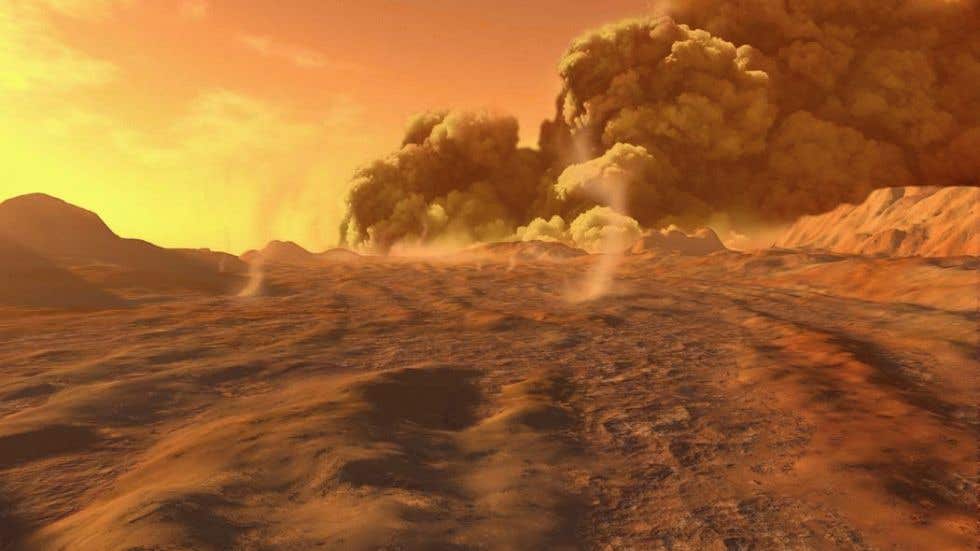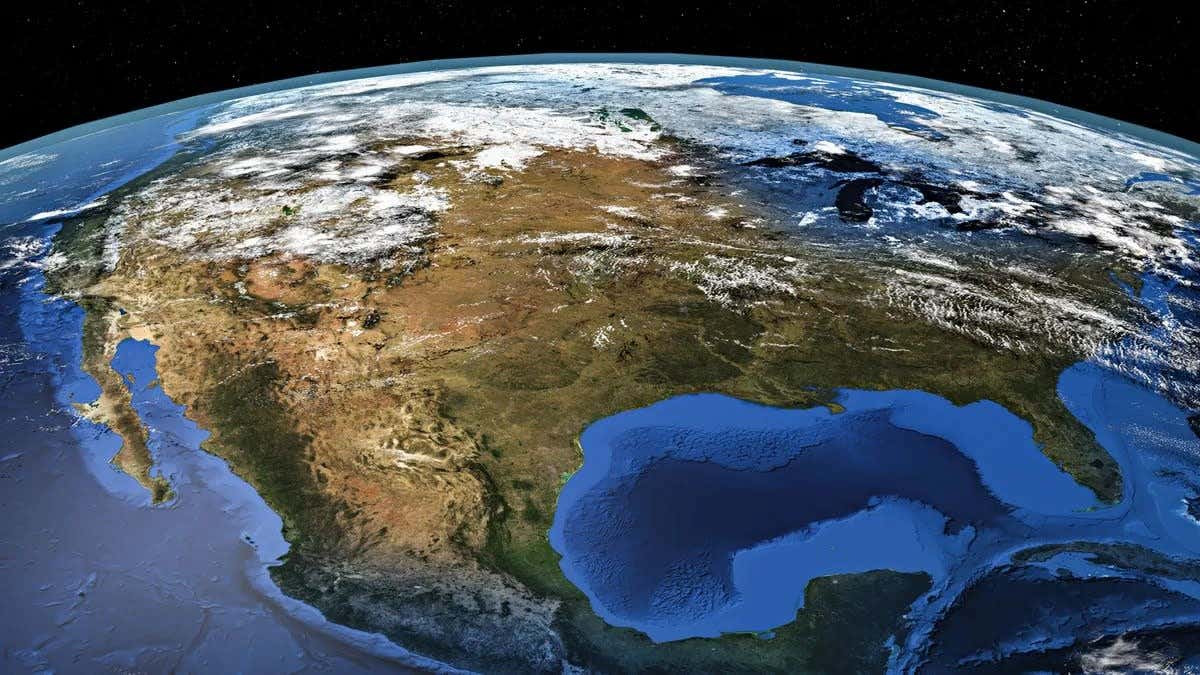The weather on Mars appears to be driven by gravity waves
New research reveals how gravity waves drive Martian atmospheric circulation, challenging previous models and improving future climate predictions.

Scientists uncover how gravity waves influence Mars’ atmosphere, revealing new insights into planetary weather. (CREDIT: CC BY-SA 4.0)
Understanding how air moves across a planet is key to predicting its weather and climate. On Earth, these patterns shape everything from storms to seasonal changes.
A new study now reveals how air circulates on Mars, uncovering surprising differences between the two planets. By analyzing long-term atmospheric data, researchers have found that gravity waves play a significant role in driving Martian air currents, particularly in the middle atmosphere.
What Drives Air Circulation on Mars?
In Earth's atmosphere, large-scale atmospheric waves, known as Rossby waves, drive circulation patterns in the stratosphere. These waves, influenced by the planet’s rotation, transport heat and momentum around the globe. However, Mars tells a different story.
Researchers led by Kaoru Sato at the University of Tokyo have discovered that on Mars, gravity waves (GWs) have a dominant effect on air circulation, particularly in the middle atmosphere at mid and high latitudes.
Gravity waves occur when air parcels oscillate due to variations in buoyancy, similar to how ripples form when a stone is tossed into water. Unlike Rossby waves, which are large and easier to observe, gravity waves are small-scale and difficult to measure directly. Instead, researchers rely on indirect methods, such as analyzing reanalysis datasets, to estimate their impact.
Using data from the Ensemble Mars Atmosphere Reanalysis System (EMARS), a dataset compiled from years of space-based observations, scientists examined the movement of Martian air.
The results show that gravity waves facilitate rapid vertical transfer of angular momentum, which significantly influences north-south air movement. This pattern is more similar to how air moves in Earth’s mesosphere than in its stratosphere.
Related Stories
The Role of Atmospheric Waves in Martian Weather
The discovery of gravity waves' influence on Mars challenges existing models of its atmosphere. Previous studies suggested that planetary waves and thermal tides were the primary drivers of circulation. However, this new analysis shows that small-scale, unresolved waves play an equally important role.
The concept of the residual mean circulation helps explain how these waves shape the Martian atmosphere. This circulation pattern is determined by momentum deposition from breaking atmospheric waves and energy from radiation processes.
On Earth, researchers use a system known as the transformed Eulerian mean (TEM) equation to analyze these effects. Because of the similarities between Earth's and Mars’ atmospheric dynamics, researchers applied the same approach to the EMARS data to determine how different forces interact.
Results indicate that unresolved waves, including gravity waves, contribute significantly to the Martian atmosphere’s circulation. More than 10% of atmospheric oscillations in both temperature and density at altitudes above 60 km are linked to gravity waves. These findings suggest that current Martian climate models may need revision to better incorporate the effects of these waves.
Comparing Martian and Earthly Atmospheres
Studying Mars’ atmosphere is more than an academic exercise—it provides a valuable comparison to Earth’s weather systems. While the two planets share similar rotation rates and axial tilt, Mars has a much thinner, carbon dioxide-rich atmosphere with extreme seasonal variations. This makes it an excellent case study for understanding planetary atmospheres beyond Earth.
"Comparing Mars to Earth allows us to refine our atmospheric models," said graduate researcher Anzu Asumi. "It’s fascinating to see how a different atmospheric composition and lower atmospheric pressure lead to a completely different balance of wave effects."
The research also sheds light on how planetary atmospheres evolve. Since Mars lacks a significant magnetic field, its atmosphere is more exposed to solar radiation and space weather. Understanding how air moves on Mars may offer insights into how planets lose their atmospheres over time, a question that is key to astrobiology and the search for habitable worlds.
The Future of Martian Weather Forecasting
Mars is an increasingly important target for space exploration. Human missions are on the horizon, and understanding the planet’s atmosphere will be critical for planning safe landings and long-term habitation. The next step in this research is to examine the impact of Martian dust storms on atmospheric circulation. These storms can engulf the entire planet, dramatically altering temperature and wind patterns.
"So far, our analysis has focused on years without major dust storms," said Sato. "However, these storms likely intensify the role of gravity waves in circulation. Our research lays the groundwork for forecasting Martian weather, which will be essential for future missions."
By refining atmospheric models with these new findings, researchers are moving closer to predicting weather on Mars with greater accuracy. The insights gained from this study could also improve climate models on Earth, demonstrating the value of planetary comparisons in atmospheric science.
One day, Mars may have its own weather forecast, complete with predictions of dust storms and air currents. Until then, scientists continue to uncover the hidden forces shaping the Red Planet’s skies.
Note: Materials provided above by The Brighter Side of News. Content may be edited for style and length.
Like these kind of feel good stories? Get The Brighter Side of News' newsletter.
Joshua Shavit
Science & Technology Writer | AI and Robotics Reporter
Joshua Shavit is a Los Angeles-based science and technology writer with a passion for exploring the breakthroughs shaping the future. As a contributor to The Brighter Side of News, he focuses on positive and transformative advancements in AI, technology, physics, engineering, robotics and space science. Joshua is currently working towards a Bachelor of Science in Business Administration at the University of California, Berkeley. He combines his academic background with a talent for storytelling, making complex scientific discoveries engaging and accessible. His work highlights the innovators behind the ideas, bringing readers closer to the people driving progress.



